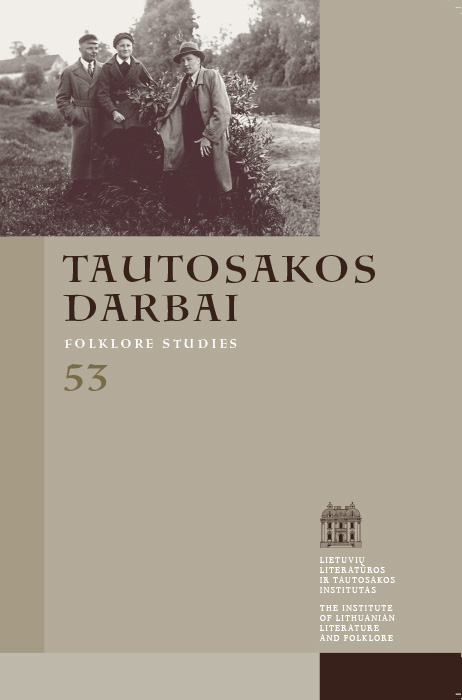1918–1920 m. kovos už Lietuvos laisvę: Pumpėnų savanoriai
Santrauka
Straipsnis skirtas kariuomenės savanoriams, kurie 1918 m. gruodžio 29 d. Vyriausybės pakviesti stojo į kovą už Lietuvos laisvę. 2014–2017 m. surinktos ir apibendrintos išsamios rašytinės ir sakytinės žinios apie 154 Nepriklausomybės kovų dalyvius iš istorinio Pumpėnų valsčiaus (Panevėžio apskr.) yra pagrindas, ieškant atsakymo į klausimą, kas šiame krašte buvo savanoriai: milicininkai, partizanai, vėliau kariai; savanorystės reiškiniui nagrinėti pasitelkti ir kai kurie kiti Lietuvos kariuomenės istorijos duomenys.
Autoriai prieina prie išvadų, kad karius savanorius veikė Lietuvos didžiojo istorinio pasakojimo vaizdiniai ir, Vytauto Kavolio žodžiais tariant, revoliucinė dvasia, kuri nuo 1795 m. tarpusavyje siejo Lietuvos kovotojų už laisvę kartas. Didžiausia karių savanorių iš Pumpėnų valsčiaus banga kilo 1919 m. pavasarį, kai su bolševikais šiame krašte vyko lemiami mūšiai; savanorių visuomeninė padėtis buvo įvairi – nuo bežemių darbininkų iki dvarininkų. Vyriausybės pažadėta žemė Pumpėnų savanorius masino, tačiau ne visada buvo pagrindinė jų kovos priežastis.
Atsisiuntimai
Skaitomiausi šio autoriaus(ų) straipsniai
- Vykintas Vaitkevičius, Iš dokumentinio paveldo tyrimų. Lietuvos partizanų laiškai , Tautosakos darbai: T 68 (2024): Tautosakos darbai
- Vykintas Vaitkevičius, Partizaninio karo atodangos Mingėlų šeimos laiškuose , Tautosakos darbai: T 68 (2024): Tautosakos darbai
- Vykintas Vaitkevičius, Iš prigimtinės kultūros žodyno: šeimyninė bičiulystė , Tautosakos darbai: T 51 (2016)
- Vykintas Vaitkevičius, 1936 metų vasaros ekspedicinė muziejininkų kelionė Rytų Lietuvoje , Tautosakos darbai: T 47 (2014)
- Vykintas Vaitkevičius, Pažįstamas ir nepažįstamas Balys Buračas: 1936 m. ekspedicijos užrašai , Tautosakos darbai: T 47 (2014)
